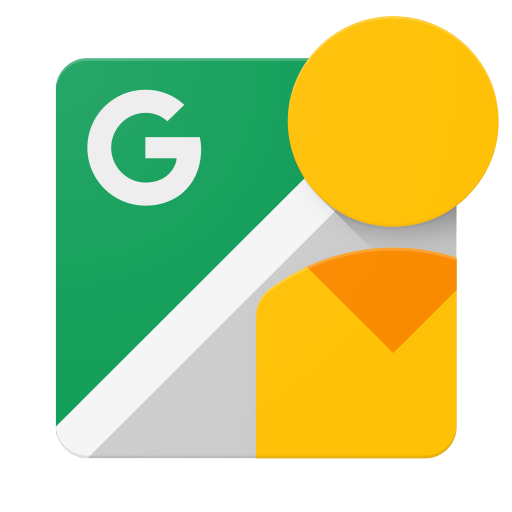คำขอทั้งหมดที่ส่งไปยัง Google Street View Publish API จะต้องผ่านการตรวจสอบสิทธิ์ เมื่ออัปโหลดภาพใหม่ ระบบจะระบุแหล่งที่มาของภาพเป็นบัญชี Google ของผู้ใช้ที่ตรวจสอบสิทธิ์
ทุกคำขอที่แอปพลิเคชันส่งไปยัง Google Street View Publish API ต้องมีโทเค็นการให้สิทธิ์ โทเค็นดังกล่าวจะระบุตัวตนแอปพลิเคชันของคุณให้ Google ทราบด้วย
เกี่ยวกับโปรโตคอลการให้สิทธิ์
แอปพลิเคชันต้องใช้ OAuth 2.0 เพื่อให้สิทธิ์คำขอ ระบบไม่รองรับโปรโตคอลการให้สิทธิ์อื่นๆ หากแอปพลิเคชันใช้ลงชื่อเข้าใช้ด้วย Google ระบบจะจัดการการให้สิทธิ์บางส่วนแก่คุณ
การให้สิทธิ์คำขอด้วย OAuth 2.0
คำขอทั้งหมดที่ส่งไปยัง Google Street View Publish API จะต้องได้รับสิทธิ์จากผู้ใช้ที่ตรวจสอบสิทธิ์แล้ว
รายละเอียดของกระบวนการให้สิทธิ์หรือ "ขั้นตอน" ของ OAuth 2.0 จะแตกต่างกันไปโดยขึ้นอยู่กับประเภทของแอปพลิเคชันที่คุณเขียน แอปพลิเคชันทุกประเภทจะใช้กระบวนการทั่วไปต่อไปนี้
- เมื่อสร้างแอปพลิเคชัน คุณจะลงทะเบียนแอปได้โดยใช้คอนโซล Google API จากนั้น Google จะให้ข้อมูลที่คุณต้องใช้ในภายหลัง เช่น รหัสไคลเอ็นต์และรหัสลับไคลเอ็นต์
- เปิดใช้งาน Google Street View Publish API ในคอนโซล Google API (หากไม่เห็น API ดังกล่าวในคอนโซล API ให้ข้ามขั้นตอนนี้ไป)
- เมื่อแอปพลิเคชันต้องการเข้าถึงข้อมูลผู้ใช้ แอปจะขอขอบเขตการเข้าถึงที่จำเป็นจาก Google
- Google จะแสดงหน้าจอขอคำยินยอมแก่ผู้ใช้เพื่อขอให้ผู้ใช้ให้สิทธิ์แอปพลิเคชันของคุณในการขอข้อมูลบางอย่างของผู้ใช้
- หากผู้ใช้อนุมัติ Google จะให้โทเค็นเพื่อการเข้าถึงที่มีอายุชั่วคราวแก่แอปพลิเคชันของคุณ
- แอปพลิเคชันขอข้อมูลผู้ใช้โดยแนบโทเค็นเพื่อการเข้าถึงไปกับคำขอ
- หาก Google ตัดสินว่าคำขอและโทเค็นของคุณถูกต้อง ระบบจะแสดงข้อมูลที่ขอ
บางกระบวนการจะมีขั้นตอนเพิ่มเติม เช่น การใช้โทเค็นการรีเฟรชเพื่อขอโทเค็นเพื่อการเข้าถึงใหม่ ดูข้อมูลอย่างละเอียดเกี่ยวกับกระบวนการของแอปพลิเคชันประเภทต่างๆ ได้ที่เอกสารประกอบเกี่ยวกับ OAuth 2.0 ของ Google
ข้อมูลขอบเขต OAuth 2.0 สำหรับ Google Street View Publish API มีดังนี้
| ขอบเขต | ความหมาย |
|---|---|
https://www.googleapis.com/auth/streetviewpublish |
สิทธิ์การอ่าน/เขียน |
หากต้องการขอสิทธิ์โดยใช้ OAuth 2.0 แอปพลิเคชันของคุณต้องมีข้อมูลขอบเขต รวมถึงข้อมูลที่ Google ให้คุณตอนลงทะเบียนแอปพลิเคชัน (เช่น รหัสไคลเอ็นต์และรหัสลับไคลเอ็นต์)
เคล็ดลับ: ไลบรารีของไคลเอ็นต์ Google APIs จัดการขั้นตอนการให้สิทธิ์บางส่วนให้คุณได้ ไลบรารีเหล่านี้พร้อมให้บริการเป็นภาษาโปรแกรมต่างๆ โปรดดูรายละเอียดเพิ่มเติมที่หน้าที่มีไลบรารีและตัวอย่าง

